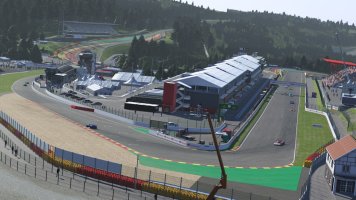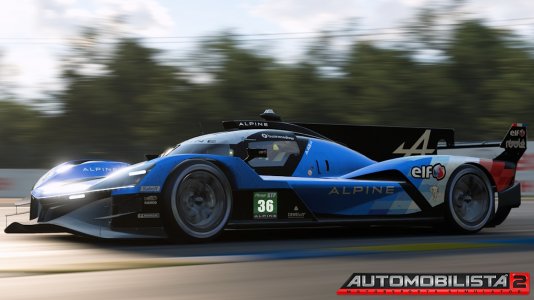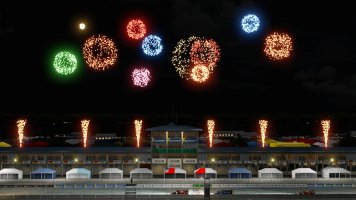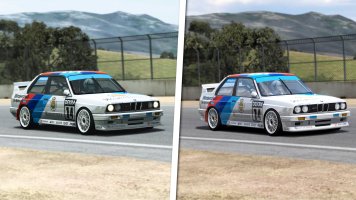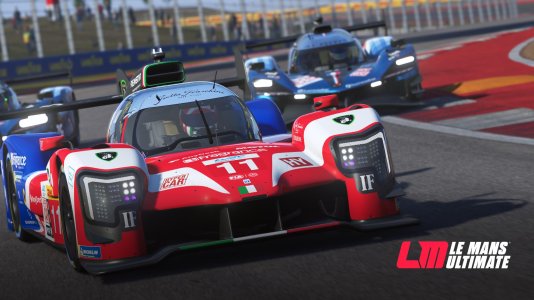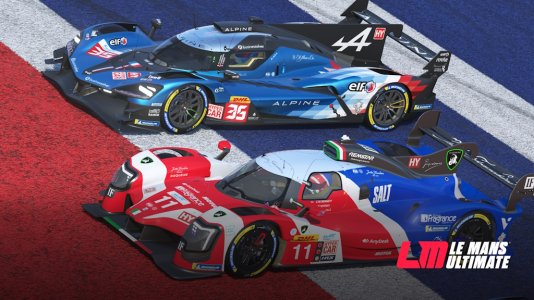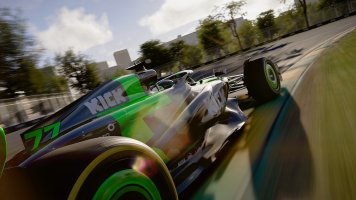It's been about a year since the last update, so I'm going over the physics again, adding some features and updating conventions to current standards.
Major new features are primarily COSMIC suspension which allows for features like physics based alignment (caster as well, for example), better implementation of installation stiffness, variable motion ratios, chassis torsion flex, a limited elastokinematic modeling and helper springs independent from bumpstops, alongside other minor features and improvements implemented into the NSX.
I've externally simulated a simplified 3D kinematic and elastokinematic model of the NSX-R rear suspension based on some data from Honda (without things like wheel rim compliance) and I've implemented in-game a dramatically simplified rear suspension toe deflection based on that model. The trend is stabilizing toe-in on the outside wheel in cornering and braking.
The front compliance pivot is theoretically doable, but it didn't produce very useful effects especially compared to the CPU use it requires, so I've opted to leave that out as the majority of the neutral toe and caster behavior is already present in the rigid modeling. Front suspensions also need to generally be rigid at AC's 333Hz to avoid minor vibration in the FFB output. The reasoning for not opting for a more comprehensive rear elastokinematic modeling or chassis bending flex is also primarily due to the 333Hz rate.
I've also updated tire modeling to the current standard and I intend to verify and improve the tire SAT modeling for the public release. Slipcurves are also more realistic, and I will implement hopefully slightly more accurate thermal behavior for tires and brakes (WIP).
On top of that, there's FFB Tweaks 'Realfeel' support for steering torque and brake pedal force that includes a basic brake booster simulation.
The next update is unlikely to include changes beyond physics changes. It will require CSP 0.2.3 minimum.
Major new features are primarily COSMIC suspension which allows for features like physics based alignment (caster as well, for example), better implementation of installation stiffness, variable motion ratios, chassis torsion flex, a limited elastokinematic modeling and helper springs independent from bumpstops, alongside other minor features and improvements implemented into the NSX.
I've externally simulated a simplified 3D kinematic and elastokinematic model of the NSX-R rear suspension based on some data from Honda (without things like wheel rim compliance) and I've implemented in-game a dramatically simplified rear suspension toe deflection based on that model. The trend is stabilizing toe-in on the outside wheel in cornering and braking.
The front compliance pivot is theoretically doable, but it didn't produce very useful effects especially compared to the CPU use it requires, so I've opted to leave that out as the majority of the neutral toe and caster behavior is already present in the rigid modeling. Front suspensions also need to generally be rigid at AC's 333Hz to avoid minor vibration in the FFB output. The reasoning for not opting for a more comprehensive rear elastokinematic modeling or chassis bending flex is also primarily due to the 333Hz rate.
I've also updated tire modeling to the current standard and I intend to verify and improve the tire SAT modeling for the public release. Slipcurves are also more realistic, and I will implement hopefully slightly more accurate thermal behavior for tires and brakes (WIP).
On top of that, there's FFB Tweaks 'Realfeel' support for steering torque and brake pedal force that includes a basic brake booster simulation.
The next update is unlikely to include changes beyond physics changes. It will require CSP 0.2.3 minimum.


